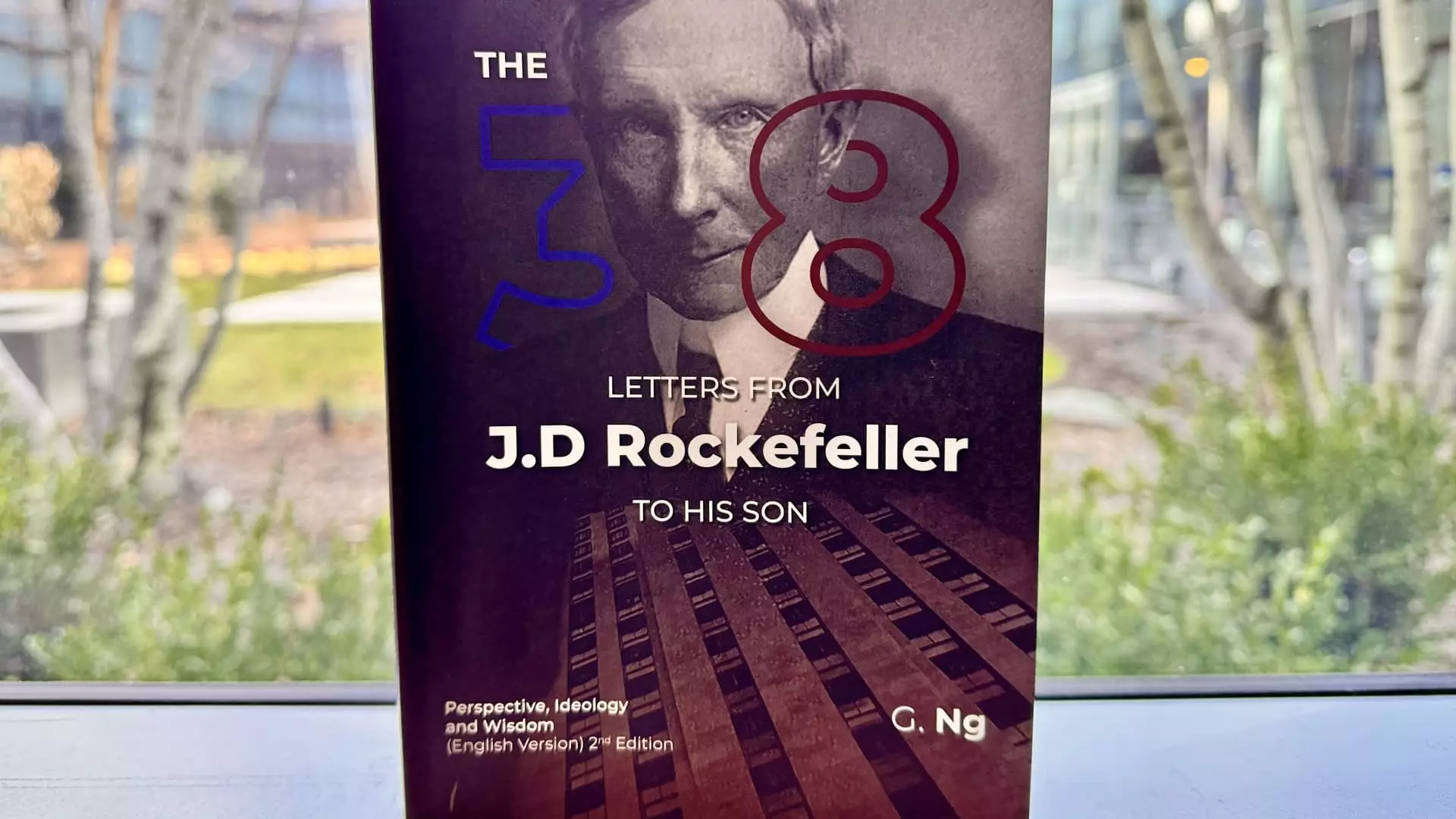In the world of literature, especially in the genre of self-help and wealth creation, few topics command as much intrigue as the life and wisdom of John D. Rockefeller Sr., America’s first billionaire. A recent surge in the popularity of a book titled “The 38 Letters from J.D. Rockefeller to His Son: Perspective, Ideology and Wisdom” has sparked debates about authorship, authenticity, and the processes behind publishing in the digital age. Despite its impressive sales figures, the book raises significant questions about its legitimacy, particularly in light of reports detailing numerous factual inaccuracies and dubious connections to reputed entities such as OpenStax, a nonprofit educational resource publisher.
As reports by CNBC have shed light on these emerging controversies, the accusations do not appear to be taken lightly. The Rockefeller Archive Center has stated that it could not verify the existence of any correspondence attributed to Rockefeller Sr., nor did the letters reflect the character or style of Rockefeller’s known writings. Among the errors pointed out was a confusingly incorrect year for John D. Rockefeller Jr.’s graduation from Brown University and a nonsensical mention of Citibank in a letter dated 1902. Questions loom about how such factual missteps slipped through the cracks, a scenario that has led to broader implications about the integrity of self-help literature and its consumption.
If true, the implications of these claims extend far beyond just one book. They speak to a growing trend where information, particularly when it is associated with revered historical figures such as Rockefeller, can easily be manipulated to serve commercial interests, drawing readers in with the allure of the established empire while delivering misleading content.
Adding another layer of complexity is the involvement of OpenStax, which found itself mistakenly affiliated with the publication of the book despite explicitly denying any such relationship. OpenStax has stated that they are conducting an investigation into the matter to protect their brand integrity. This is a telling snapshot of the greater chaos within the self-publishing ecosystem, which often lacks rigorous checks and balances for content accuracy. Such circumstances highlight a pertinent issue for educational and publishing institutions, particularly in the age of digital media where anyone can publish content with a few clicks.
How can readers differentiate between credible sources and misleading representations? As this case unfolds, it serves as a reminder for consumers to remain vigilant about their choices when diving into works that claim to offer sage advice or deep insights into a historical figure’s thoughts. It raises the crucial question: How standard has the bar been set for authorship and scholarly accuracy in an era leaning heavily towards self-publishing?
Despite the questions surrounding the book, it’s undeniable that the Rockefeller name retains a fundamental pull. The legacy of the Rockefeller family continues to captivate, with their wealth often representing the American Dream gone to its most extreme. Even in its seventh generation, the Rockefeller lineage still carries a mystique that can be both a boon and a burden, as seen in cases like “The 38 Letters.” This fascination is heightened by the astronomical prices fetched at auctions for Rockefeller-owned art and artifacts, reflecting an insatiable appetite for belongings linked to their storied past.
The persistence of this admiration can lead to a precarious scenario whereby fictionalized elements of their narrative or dubious literature—including demonstrably false documents—are granted authority. This further underscores the need for rigorous fact-checking in publishing, especially concerning figures of significant historical and cultural impact.
As more readers seek guidance on financial wisdom and successful living, there lies a critical responsibility on authors and publishers alike to provide content that is not only engaging but factual. Although “The 38 Letters” has experienced considerable success in sales—boasting an impressive average review rating—it’s essential to question whether the audience truly grasps the integrity of what they are consuming. Are they seeking genuine knowledge rooted in the true teachings of financial titans, or are they captivated by the packaging of a story steeped in historical grandeur, regardless of its authenticity?
This inquiry serves as an essential lens through which we should view self-help literature and its place in modern society. As readers, the onus lies on us to seek not just the allure of appealing narratives but the factual backbone that substantiates them.
In closing, “The 38 Letters from J.D. Rockefeller to His Son” serves as a jarring reminder of the pitfalls of literary impermanence in the quest for knowledge. The need for discernment has never been more critical, echoing the age-old philosophy that not all that glitters is gold. It compels us to dig deeper, ensuring our thirst for wisdom is quenched by truth and integrity, rather than deception.

Leave a Reply